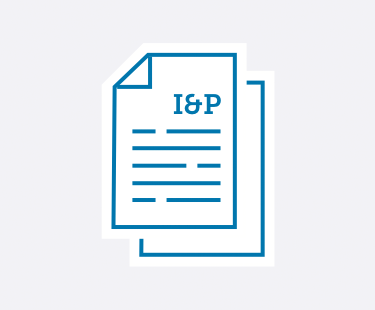

Learn practical strategies to handle emerging trends and leadership challenges in private schools.
No matter if you’re a School Head, Admission Director, Development Director, Board member, or any other private school administrator—Ideas & Perspectives®, ISM’s premier private school publication, has strategic solutions for the pervasive problems you face.
- Tuition not keeping pace with your expenses? In I&P, explore how to use strategic financial planning to create your budget and appropriately adjust your tuition.
- Enrollment dropping off? Discover how to implement the right admission and enrollment management strategies that engage your community—and fill your classrooms.
- Trouble retaining teachers? Learn how you can best support your teachers using ISM’s Comprehensive Faculty Development framework. Your faculty members will become more enthusiastic about their roles—which ultimately improves student outcomes.
- Fundraising campaigns not as successful as you’d hoped? Implement ISM’s practical advice and guidance to build a thriving annual fund, construct an effective capital campaign, and secure major donors—no matter your community size or location.
- Not sure how to provide professional development—for you and your staff? Learn ways to develop and fund a successful professional development strategy. You can improve teacher-centered satisfaction and growth, which in turn strengthens student-centered learning.
- Problematic schedule? You can master the challenges of scheduling with the help of ISM’s practical advice, based on our experience with hundreds of schools and our time-tested theories.
- And so much more.
I&P has shared targeted research, up-to-date insight, and sound theory with school leaders since 1975. More than 8,500 private school decision-makers find the answers to their schools’ administrative and governance matters in our advisory letter. We give you the strategic answers you need.
As an ISM Silver or Gold member, you not only receive issues online and in print 10 times a year, but you have access to 900+ articles in our web archive. Need help? It’s at your fingertips! Learn more and sign up for ISM's membership here.
Search
See the articles from our latest issue of Ideas & Perspectives.
Faculty Compensation, 2011–12: Day School Salaries
Volume 37 No. 10 // August 10, 2012
In our continuing research concerning the competition for quality, mission-appropriate teachers for private-independent schools, ISM annually surveys a random sample of I&P subscriber schools concerning compensation for faculty and administrators.1 This article focuses on the survey results regarding the salaries of day school teachers. A key factor in a school’s ability to sustain programmatic excellence over time is competitive faculty salaries. Competitive salaries enable you to retain members of your faculty and hire new teachers. Consider the following results of our survey—and where your school falls in the scope of compensation variables.
1. Already a member? Click here to login.
2. Not a member? Click here to become a member.
3. Not sure? We'll help you figure it out.
The Characteristics of Professional Excellence II
Volume 37 No. 9 // July 19, 2012
In the 2010–11 school year, ISM conducted a one-year partial replication—using a stronger research design and a more exacting statistic—of its original six-year International Model Schools Project, a research project that focused on student performance, satisfaction, and enthusiasm. The results of the 2010–11 project, titled the ISM Student Experience Study (SES), were published by ISM in complete form as a white paper in January 2012, and summarized in Ideas & Perspectives in Vol. 37, No. 4. The following article, featuring one of the instruments derived from the SES findings, is designed to be read in the context of either of those two documents. Readers are asked to take note of the fact that the Characteristics of Professional Excellence II, shown in this article, supersede ISM’s original Characteristics of Professional Excellence, first published in Vol. 31, No.8, and then expanded upon in Vol. 32, No. 16.
1. Already a member? Click here to login.
2. Not a member? Click here to become a member.
3. Not sure? We'll help you figure it out.
Managing the Fiscal Realities of Enrollment Changes
Volume 37 No. 9 // July 19, 2012
Even after careful budget planning, variances in enrollment projections can present problems—lower-than-expected enrollments can be alarming and increases can lead to unwise programmatic enhancements. Careful planning, an understanding of market realities, and strong leadership are necessary and will guide you to safe harbor.
1. Already a member? Click here to login.
2. Not a member? Click here to become a member.
3. Not sure? We'll help you figure it out.
The Board’s Role in a Successful Capital Campaign
Volume 37 No. 8 // June 20, 2012
ISM has long held that stable schools have strategic Boards. A capital campaign grounded in the Board’s understanding of (and commitment to) its strategic role is critical for campaign success. The use of the word strategic is intentional. “A strategic Board is one that sees its core role as building a financial/organizational platform that ensures that the institution will be able to fulfill its mission on behalf of the next generation of students … [by]… sustain(ing) long-term programmatic excellence.” The following set of four core elements critical to institutional readiness as the Board considers embarking on a capital campaign.
1. Already a member? Click here to login.
2. Not a member? Click here to become a member.
3. Not sure? We'll help you figure it out.
Strategic Financial Planning and Your School’s Budget: Companion Documents
Volume 37 No. 8 // June 20, 2012
Private-independent schools perpetually undertake two important events—strategic financial planning and budgeting. Budgeting occurs annually; strategic planning is an event-based project that occurs every four to six years. So, how are the processes similar, different, and related? This article explores the interdependence of these two critical institutional processes.
1. Already a member? Click here to login.
2. Not a member? Click here to become a member.
3. Not sure? We'll help you figure it out.
The Division Head’s Role as Liaison Between the School Head and the Faculty
Volume 37 No. 7 // June 1, 2012
As Division Head, your primary objective is to improve the already excellent faculty at your school through carefully focused professional development and evaluation—which supports the school mission, the strategic direction of the school, and excellence in student achievement. Further, if you don’t actively engage with teachers in “managing” performance, faculty capacity will only increase at random, thus severely limiting the likelihood of maintaining and enhancing student performance, satisfaction, and enthusiasm over the long term. Coaching and mentoring is “the thing itself”—without it, an administrator’s role is reduced to merely bureaucratic functions.
1. Already a member? Click here to login.
2. Not a member? Click here to become a member.
3. Not sure? We'll help you figure it out.
The Faculty Culture Profile II
Volume 37 No. 7 // June 1, 2012
In the 2010–11 school year, ISM conducted a one-year partial replication—using a stronger research design and a more exacting statistic—of its original six-year International Model Schools Project, a research project that focused on student performance, satisfaction, and enthusiasm. The results of the 2010–11 project, titled the ISM Student Experience Study (SES), have been published by ISM in its complete form as a white paper in January 2012, and summarized in Ideas & Perspectives in Vol. 37, No. 4. The following article, featuring one of the instruments derived from the SES findings, is designed to be read in the context of either of those two summary documents. Readers are asked to take note of the fact that the Faculty Culture Profile II, shown in this article, supersedes ISM’s original Faculty Culture Profile.
1. Already a member? Click here to login.
2. Not a member? Click here to become a member.
3. Not sure? We'll help you figure it out.
The Moral Costs of Private-Independent Schools
Volume 37 No. 7 // May 31, 2012
A recent article by Rabbi Aryeh Klapper, Dean of the Center for Modern Torah Leadership (MA), introduces the issue of pricing as a moral issue.1 Rabbi Klapper suggests that Jewish communities should view their widespread consternation about rising costs as less of a “money issue” and more one of “moral costs.” He notes, for example, that large numbers of Jewish parents feel they are being increasingly forced into an impossible-to-solve conundrum: financially ruinous tuition levels for their children, on the one hand, versus their deeply felt moral commitment to Jewish education on the other. Those in leadership positions in Jewish day schools, thus, are pulled into an agonizing financial and moral whirlwind.
1. Already a member? Click here to login.
2. Not a member? Click here to become a member.
3. Not sure? We'll help you figure it out.
21st Century Schools: The ISM Advancement Model
Volume 37 No. 6 // May 7, 2012
ISM has recently published several articles on the 21st Century School, all addressing the changing nature of the classroom experience. No less dramatic are the changes taking place in school resource management, resulting from the need for schools to maintain strong enrollment and to generate increasing amounts of gift and auxiliary revenue—all within the context of a challenging economy. These changes require that the school’s message be coordinated to engage a donor base that is sophisticated in gathering and synthesizing information from multiple sources. Admission prospects and donors are demanding the demonstration of value, and philanthropy must now fulfill their interest as much as it meets institutional need. In view of these changing circumstances, the 21st Century School is compelled now to coordinate the roles of admission, development, and marketing/communicating.
1. Already a member? Click here to login.
2. Not a member? Click here to become a member.
3. Not sure? We'll help you figure it out.
Scheduling Theory: The Rate of Collapse and ‘Loose’ Periods
Volume 37 No. 6 // May 7, 2012
In lower schools, there is rarely free time or, in scheduling language, unstructured time. Such free time usually occurs during homeroom, where the teacher recognizes the need to ease off and provide some relaxation for students who are starting to become overwhelmed, just need time to play, or are having trouble concentrating. This does not need scheduling attention because it is a result of teacher acuity and responsiveness to student need.
1. Already a member? Click here to login.
2. Not a member? Click here to become a member.
3. Not sure? We'll help you figure it out.


